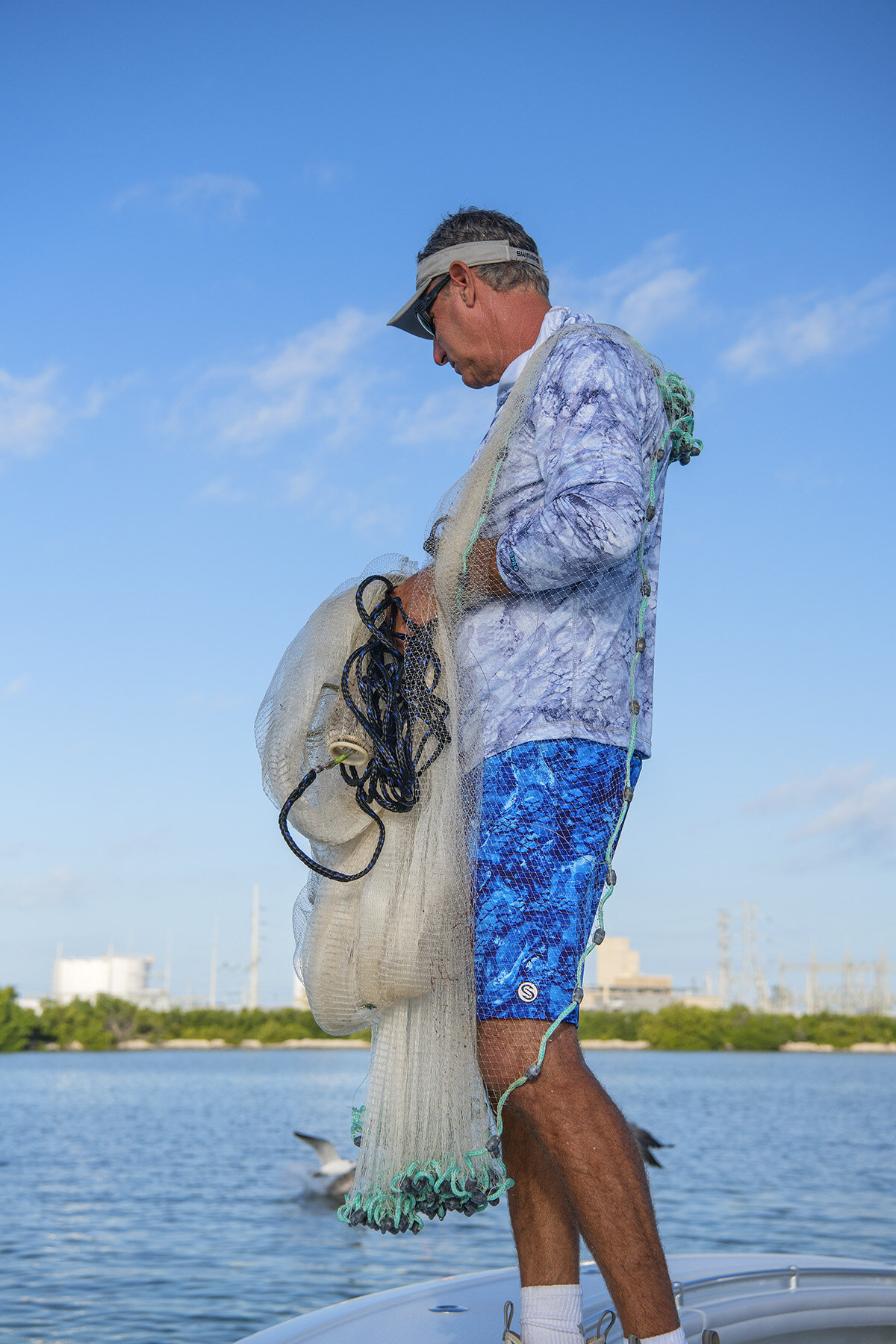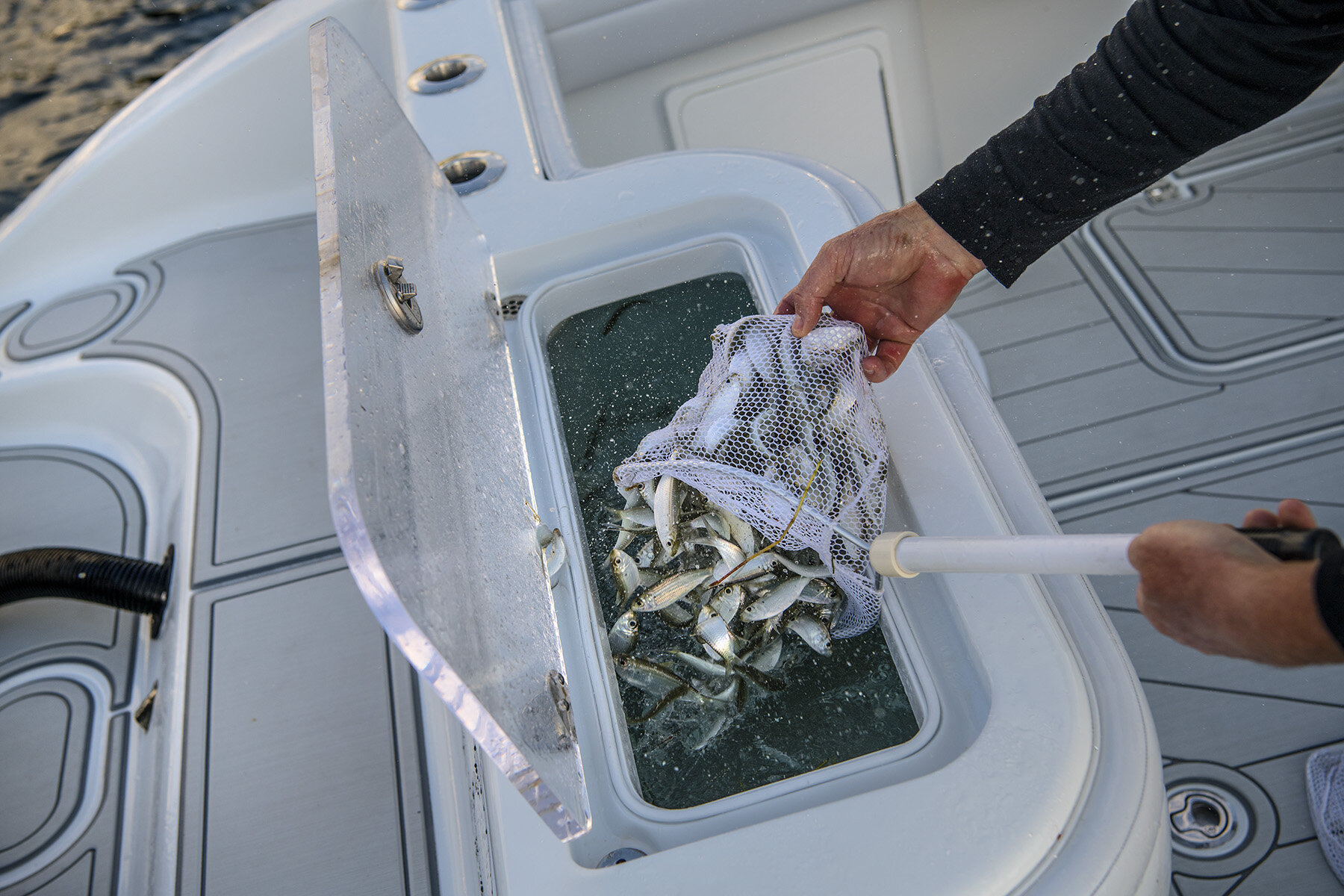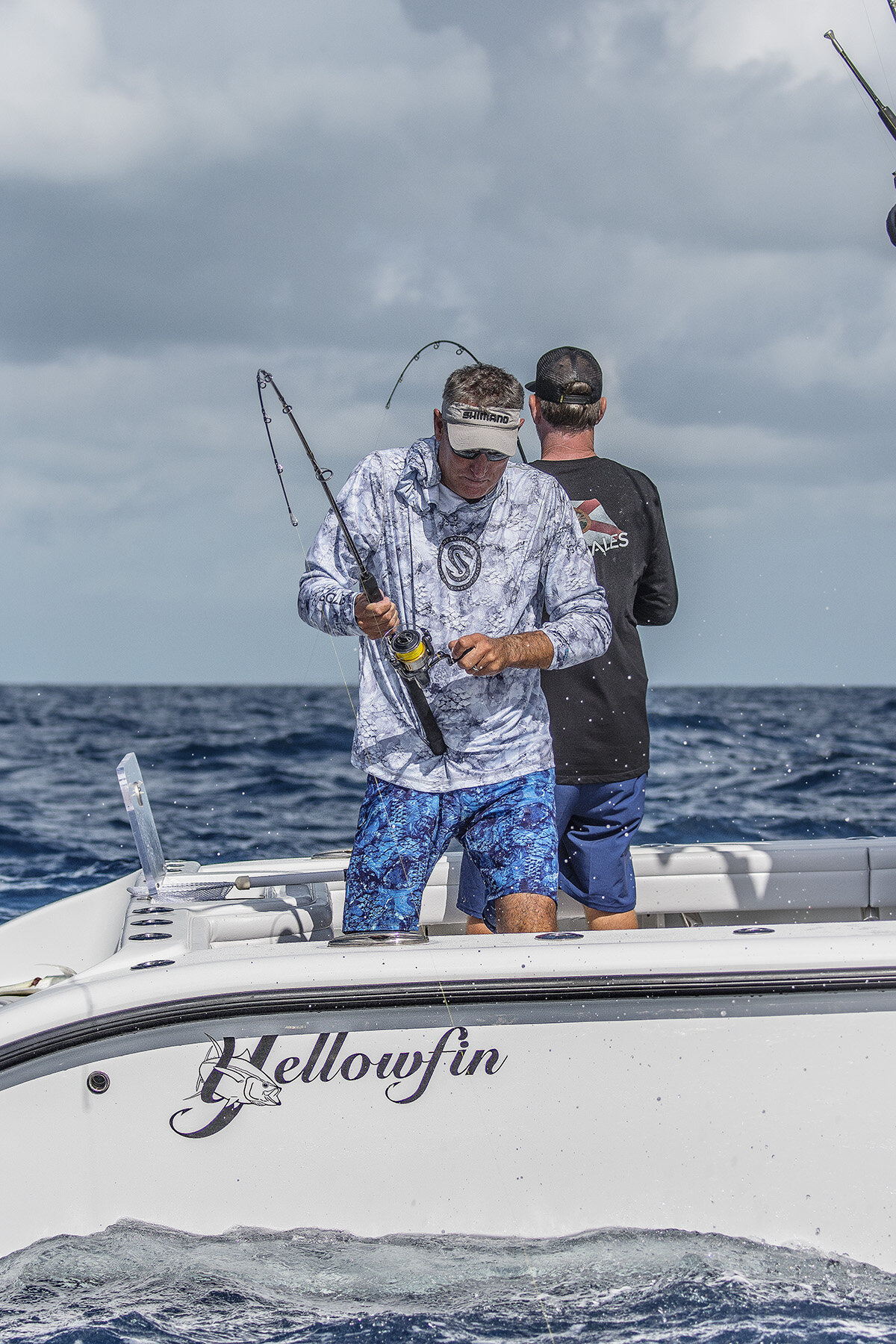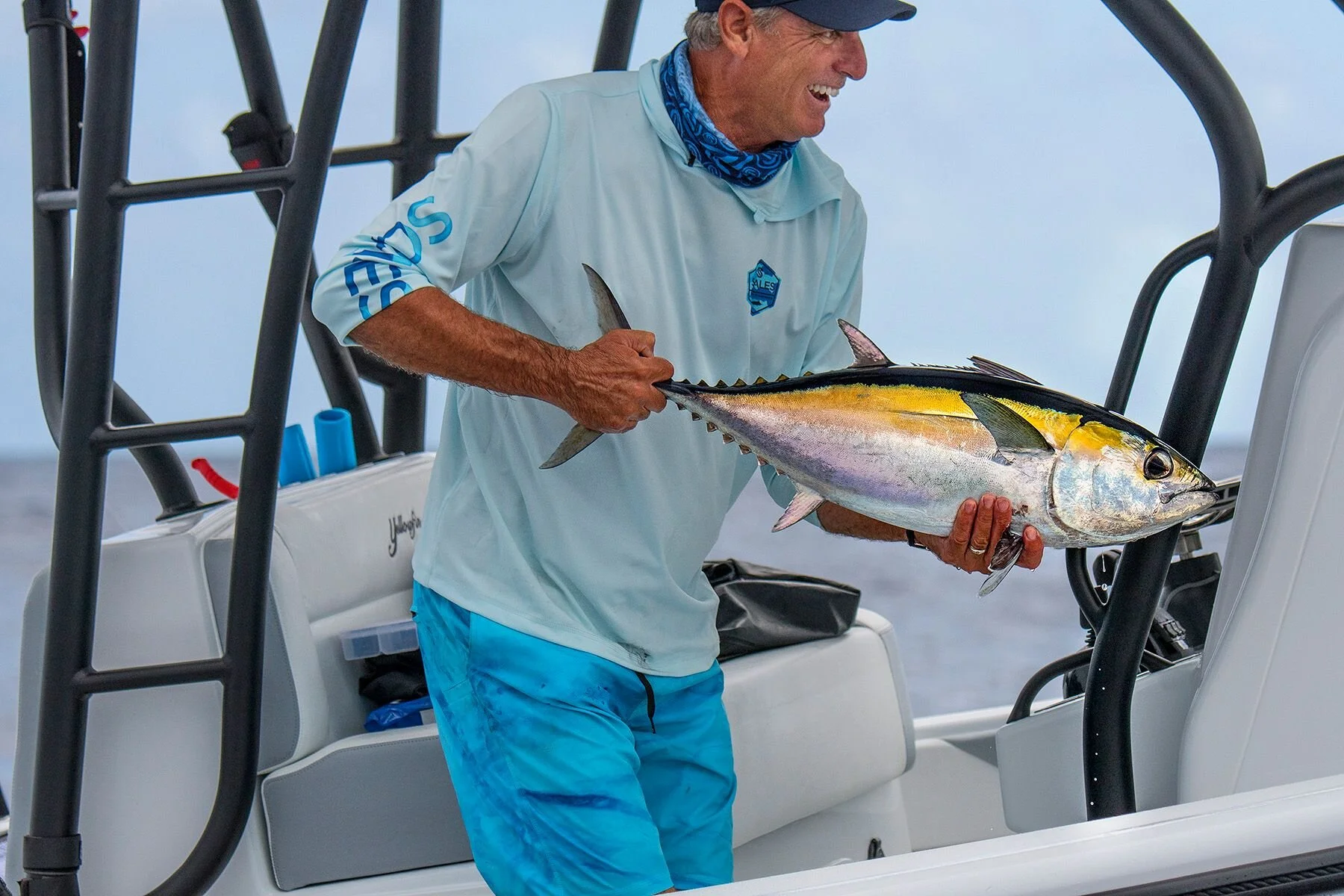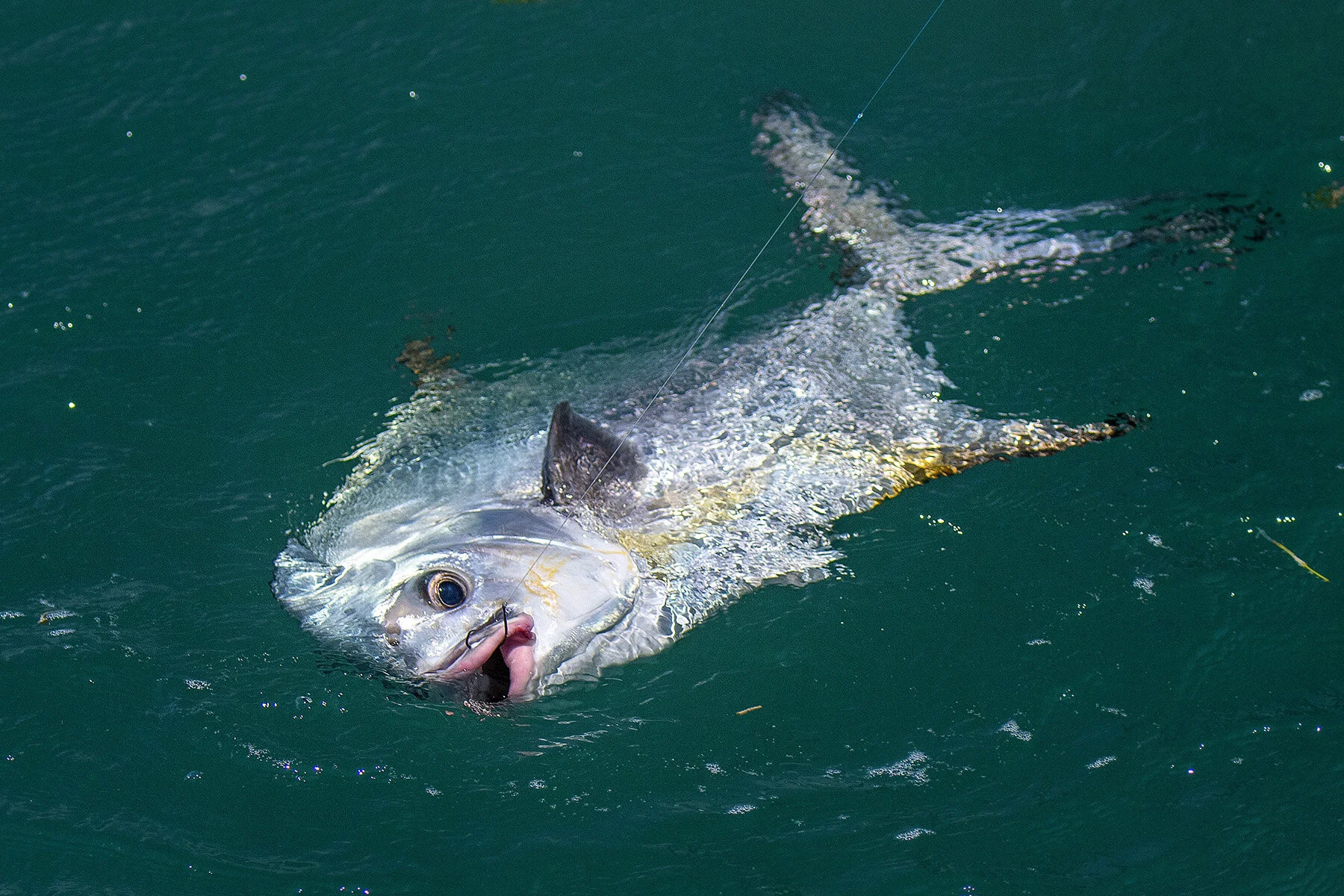Tuna Tidbits
written by Evan Anderson
Tuna fishing is the bread and butter of the commercial fishing industry and captains Steve Rodger and Scott Walker have some helpful tidbits for us today as they head out to hit the “Magic Hour” and haul in a load of blackfin tuna. They cover everything from cooking tips to how to set your boat up for success. “There’s so much effort that takes place for that one magical hour,” say both captains, “You know that when you’re in the right place with the right bait, with the right equipment then you are gonna catch more fish in that hour than if you were not prepared and you spent 10 hours out there.” Here are some helpful tuna tidbits.
“There’s so much effort that takes place for that one magical hour.”
Bait Prep
Captain Rodger is spraying off his SeaDek flooring when Captain Walker approaches. “What brings you to big City?” asks Rodger. Walker replies, “That live well full of bait right there.” Rodger returns, “You like that I already caught those, huh?” Getting your bait prepped as early as possible will make it much easier for you to get out there and get into position quicker. Anything you can do, whether it’s early that morning or even the night before will expedite your departure.
When you’re getting set up and you plan to use live bait, you want to make sure you pair your hooks to your bait, not the other way around. “Y’know when people say ‘my bait’s too small?’” Walker says, “No your hook’s too big.” “The hook’s gotta match the size of the bait so the bait can swim naturally,” explains Rodger.
Getting into Position
As Rodger eases off the throttle on his Mercury Marine motor, Walker begins pulling the chain out and readies himself to lower the anchor. “I know you were a little angry about that 30 foot of chain on the anchor,” says Rodger, “But the thing about anchoring up in that deep water is that it’s a pain in the butt, and you want to make it happen the first time you try. You want to set it down, and you want it to hold. So I’ve always been a big believer in however long the boat is, that’s almost how much chain you need.”
@ SE Multimedia 2019
Obviously, you want to drop your anchor in the right spot. It’s important to anchor up near a wreck or some kind of structure at the bottom, because that is what is going to attract fish. Walker and Rodger use a Simrad radar system to find the exact location of the wreck or reef that they’re anchoring around. You’ll have to use “a little captain’s magic with the wind,” as Walker says when deciding where to put that anchor so that your boat sits right on the edge of that structure. “That’s a major part of the whole day is getting the boat in the right spot,” says Walker.
In the wintertime in the Florida Keys, setting up your boat right on the edge of where the shallow water meets the deep water seems to be the best spot. “We’re just right off the edge of the reef and trickling some bait out,” explains Rodger as he works the Mercury motor to get in position, “That time of year all the fish seem to get right on the edge of the reef...What we like to do is to just sit right off that edge of the reef...As the tide pushes the bait fish offshore, they get on them.” Rodger likes to anchor around a wreck on the edge of the reef, allowing anglers with him to do some bottom fishing around that wreck for snapper while they wait for the bigger, topwater biting fish to show up.
@ SE Multimedia
Cooking
Back on shore, Captain Walker explains his method for cooking and preserving blackfin tuna.
“I cut the loin into 3rds. You gotta get all the red meat off, which you’d do anyway to eat it.” As Walker cuts he explains that you want the segments about 4 inches long, then roll the filet over and slice it into strips about the width of a celery stalk. Then add a tablespoon of olive oil and get your cooker set to 10psi. “Once it starts steaming,” he says, “turn the pressure cooker to 10 pounds, cool it down a little bit, and let it cook for 80 minutes. After 80 minutes take it off the fire, and let it cool naturally, don’t speed it up. Come back an hour later, the pressure will be released, you can open the lid.” Walker continues “You want to wait a couple of hours until they’re cool to the touch.” Then rinse it off in the sink and pad it dry, throw it in a jar, and that will last you about 2 years. You can watch Walker demonstrate this process at the 10:45 mark in the episode.
Ready to slay some tuna? Check out the full episode below and see these tidbits in action as Captains Scott Walker and Steve Rodger hit the tuna “Magic Hour” on S11:E6 of Into the Blue.



